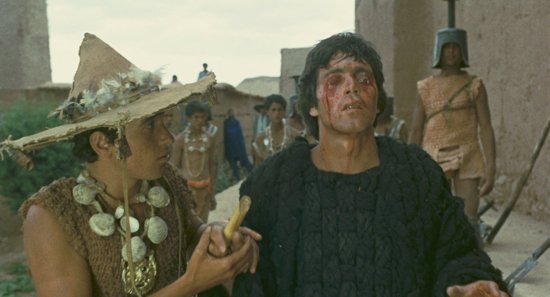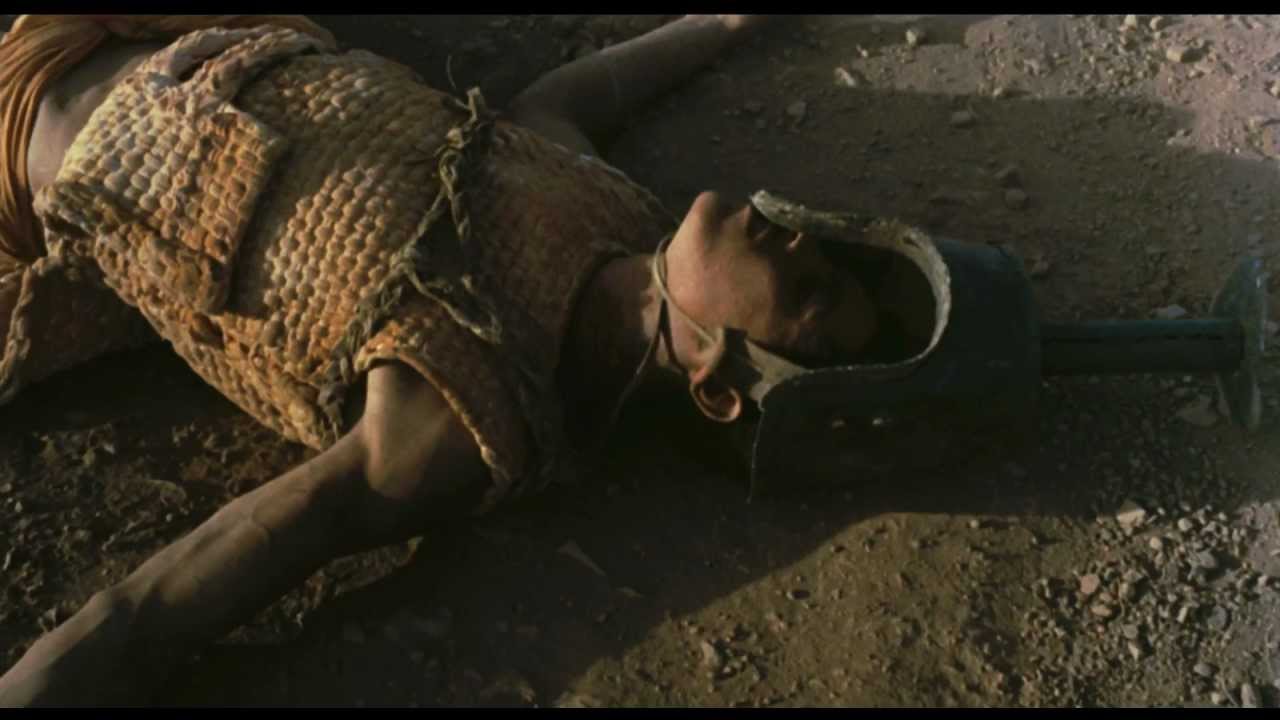This double-disc Blu-ray/DVD package offers an ideal opportunity to assess the place of Oedipus Rex (Edipo Re) in the history of ideas about the ancient world. Paradoxically, much of what we think about how that world looked comes from the movies, and new recreations are likely to be judged based on old ones.
Our visual conceptions have accreted over the decades, and Pier Paolo Pasolini’s two filmed Greek tragedies – the other being his 1969 version of Euripides’ Medea – are an important part of this history of reception. They’re also masterpieces of cinematic adaptation. The first tragedians themselves chose to adapt and retell old myths. These stories are protean: each telling is a reimagining. By adapting their stories in turn, the Italian director authoritatively exerted the right of cinema as a medium to be a teller of them too.
The etymology of the ancient Athenian word tragoidia is disputed, but the likelihood is that it means something like ‘goat song’. Tragedy’s roots are tied up with ritual animal sacrifice. Its performance was central to the annual festival of the god Dionysus, which also served to demonstrate Athens’ wealth and military strength. But tragedy is subversive, just like its patron Dionysus, god of intoxication and contradiction. The plays examine what it means to challenge the status quo. Athens’ political might was celebrated with stories of hubris, excessive pride that angers the gods. Its display of wealth was followed by dramatic acknowledgements of the incapacity of humans to outwit fate. Sophocles’ Oidipous Tyrannos (aka Oedipus Rex) is about guilt – the moral corruption that Oedipus brings to Thebes gives rise to a plague, the literal corruption of flesh. Oedipus must become the scapegoat, taking all the sins of his city upon himself. The play as we have it is nothing but gorgeous poetry about terrible events; staging necessarily involves addition. Pasolini’s feature is about these things too, but it’s also about setting and atmosphere: a romantic, idealised, brutal version of the landscape that gave rise to this tale.
The text of Sophocles’ play is sophisticated and complex. Scattered with puns and contradictions, it reinforces the paradoxical story. Pasolini’s take is linguistically simpler. Words are used sparsely, with intertitles expressing some of the most complex ideas, so that the music, setting and action do a great deal of the work. The layers of visual meaning – autobiographical, Freudian, cinematic – provide the complexity. In the repetitious brutality of its landscapes and societies, the movie is conscious of the essential dissonance between the elegant beauty of Sophocles’ language and the terrible violence it portrays.
Pasolini sets the story in three separate contexts, mirroring the riddle the Sphinx set Oedipus about the three stages in the life of a man. The first section, Oedipus’ babyhood, is set in 1920s Italy and is the most ‘personal’, drawing on Pasolini’s own life. It concentrates on the Freudian interpretation of the story: the jealous father, aware that his son has stolen his wife’s love, is resentful of the boy’s youth and already fearing usurpation. Meanwhile, the son is jealous of his mother’s love for his father. The city setting takes the story only a step away from its primal interpretations. Over the military uniforms and cars we hear the relentless sawing chirrup of the crickets, a sound that encapsulates a Mediterranean setting, until the wonderful segue into the second section on Oedipus’ adulthood is signalled by an eerie flute.
Pasolini shot this part on the empty, rocky roads of Ouarzazate in Morocco, surrounded by the stark High Atlas Mountains. The raw savagery of this pseudo-Greek setting is fantastically evocative – the wind blows across the dusty land, the red mountains and the blue sky sit barren and timeless – but most of all it’s the extraordinary faces of the actors that tell us we’re in a different time. The costume design evinces some genius, all blues and oranges and straw and clay. There is a consistency to this bizarreness that suggests it can only be the product of some ancient, ritualistic significance. The weird headdresses sum up the vision. Look at the Oracle of Delphi under her lone tree, with the Sibyl’s headdress standing in for the temple, or the Sphinx’s mask – they feel more influenced by African ceremonial masks than what we know of Greek theatrical ones.
Then there’s the plangent music, the barrenness of the desert places that stand in for ancient Thebes and Corinth. The action feels nomadic, pre-civilisation, taking place amid lonely roads and the ruined cities that Oedipus visits on his travels. A dissonance arises from the use of the Berber kasbahs of southern Morocco as substitutes for the Greek cities. However, this is more evocative of what it might have been like in those cities than most reconstructed sets could be, even though the latter might be truer to their sources. The crickets’ chirping returns in the scene where Oedipus and Jocasta consummate their marriage, to call back the first section and mark the circular story. In a meditative scene of horror, a baby crawls next to the corpses of people who have died from the plague caused by the principals’ incest, and carrion birds caw overhead. All of these motifs are additions to the text, but they feel absolutely integral. This is Pasolini’s triumph, the picture’s harsh glory.

Like the auteur’s own Medea, or Michael Cacoyannis’ Iphigenia (1977), The Trojan Women (1971) and Electra (1962), Oedipus Rex offers a profoundly personal vision of the essence of what Greek tragedy has come to mean to us. This is in many ways a movie about grief. As a generalisation, although the Greek tragedians certainly depicted individual grief, it was as a consequence of the drama that was the real focus. In the Aristotelian model, hubris (pride) and nemesis (punishment) lead to catharsis, the resolution of collective suffering. In the Nietzschean model, the conflict is between passion and rationality. In both interpretations, individual grief is co-opted into an expression of something that has wider significance. Pasolini’s achievement is to return the emotion of the story to the individual protagonists.
Eureka have done a good job here. The new high-definition transfer looks bright and strangely too perfect, while freshly translated subtitles are an additional, very well-executed blessing. The accompanying booklet, featuring interviews and excerpts from Pasolini’s own writing, is beautifully put together as well. A kind of director’s commentary in text form, it illuminates both the film and its creator.
Oedipus Rex is out now on Blu-ray and DVD through Masters of Cinema/Eureka Entertainment.




